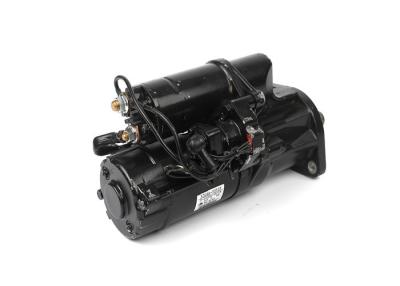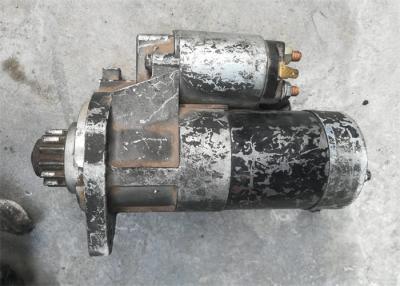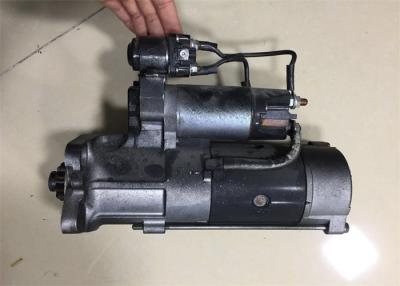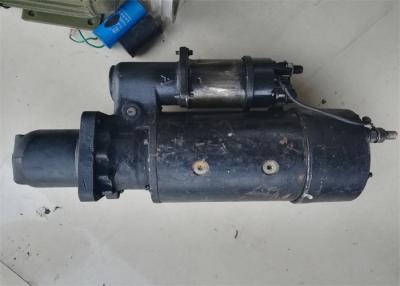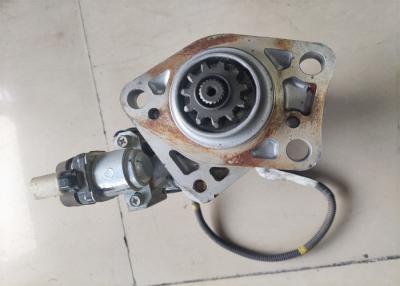





| Price | Negotiated |
| MOQ | Negotiable |
| Delivery Time | 5 - 8 work days |
| Brand | Mitsubishi |
| Place of Origin | Japan |
| Model Number | 4M50 |
| Packaging Details | Neutral Package or Fumigation Free |
| Payment Terms | D/P, T/T |
| Supply Ability | 5 pieces |
| Condition | Used | Engine model | 4M50 |
| Place of Origin | Japan | Packaging Details | Neutral Package or Fumigation Free |
| Color | Same as pictures | Excavator model | HD820V SY215 - 10 |
| Material | Metal | Model Number | 4M50 |
| Supply Ability | 5 pieces | Brand Name | Mitsubishi |
| Payment Terms | D/P, T/T | Price | Negotiated |
| Delivery Time | 5 - 8 work days | Product name | Second hand starter motor |
| Quality | High performance | Part number | ME223360 |
4M50 Second Hand Starter Motor For Excavator HD820V SY215 - 10 ME223360 24V
Specification
| Voltage: 24V |
| Part Name: Starter motor assy |
| Engine type: Diesel |
| Category: Spare parts |
| Cylinders Number: 4 |
| Application: Excavator engine |
| Test staus: Normal |
| Type: Electric Injection |
| Industrial Engine: 4M50 |
| Type: Diesel Engine |
Description
Most drivers improvise if the starter is faulty or battery power is low. The improvising is done by pushing the vehicle back or fro just to begin the combustion process. Though this is not highly advisable, but in a situation where the battery needs to be charged by the vehicle’s alternator.
Battery cables
As
we
mentioned,
the
starter
motor
requires
very
high
electric
current
to
turn
over
the
engine.
That's
why
it's
connected
to
the
battery
with
thick
(large
gauge)
cables
(see
the
diagram).
The
negative
(ground)
cable
connects
the
negative
"-"
battery
terminal
to
the
engine
cylinder
block,
or
transmission,
close
to
the
starter.
The
positive
cable
connects
the
positive
"+"
battery
terminal
to
the
starter
solenoid.
Often,
a
poor
connection
at
one
of
the
battery
cables
can
cause
the
starter
motor
not
to
work.
How the starting system works:
When
you
turn
the
ignition
key
to
the
START
position,
or
press
the
START
button,
if
the
transmission
is
in
Park
or
Neutral,
the
battery
voltage
goes
through
the
starter
control
circuit
and
activates
the
starter
solenoid.
The
starter
solenoid
powers
the
starter
motor.
At
the
same
time,
the
starter
solenoid
pushes
the
starter
gear
forward
to
mesh
it
with
the
engine
flywheel
(flexplate
in
an
automatic
transmission).
The
flywheel
is
attached
to
the
engine
crankshaft.
The
starter
motor
spins,
turning
over
the
engine
crankshaft
allowing
the
engine
to
start.
In
cars
with
a
push
button
start,
the
system
disengages
the
starter
as
soon
as
the
engine
starts
running.
The working of a starter is quite easy and interesting, but most drivers really don’t know the secret behind motor cranking. When the ignition key or bottom is press, the transmission should be in park or neutral state. The battery voltage goes to through the starter control circuit to activates the solenoid.


